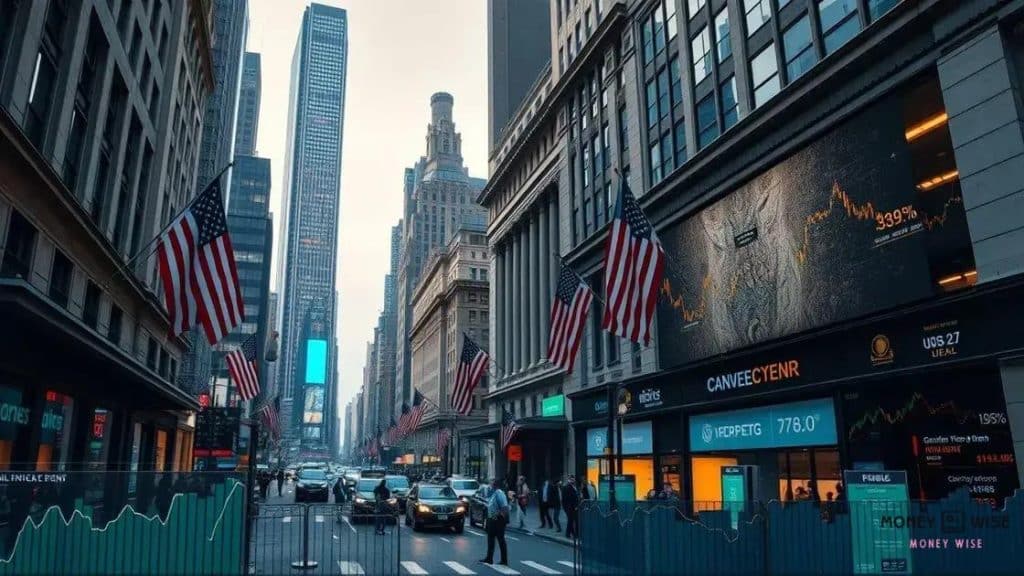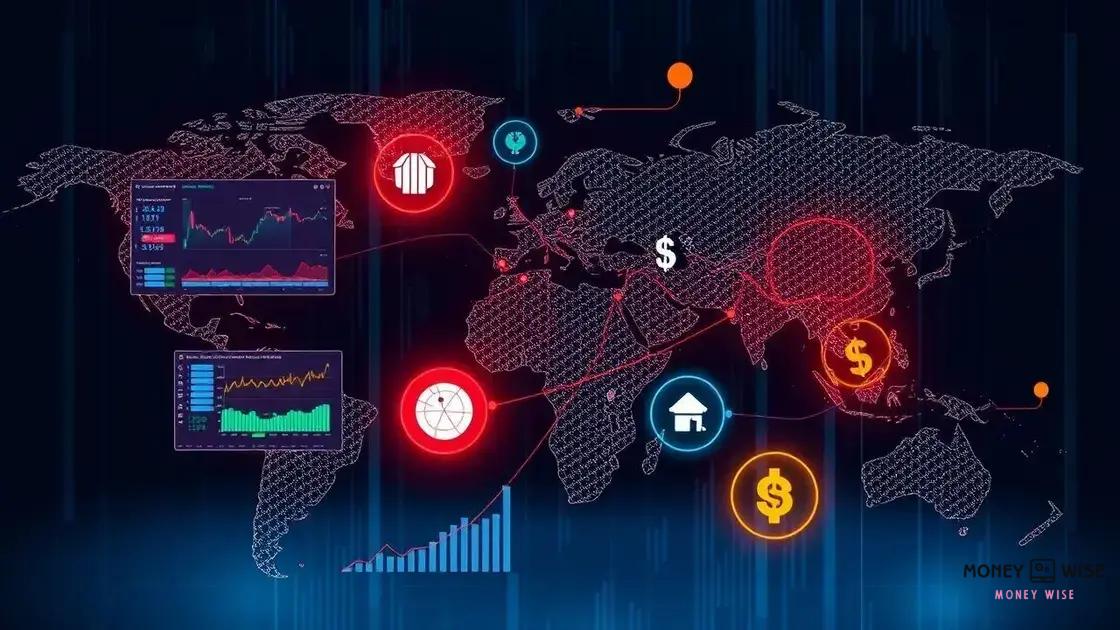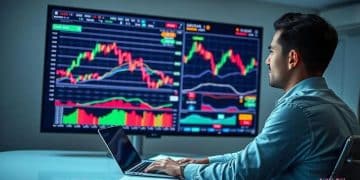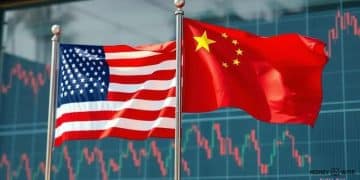US exceptionalism investment decline: understanding the shift

US exceptionalism investment decline refers to the weakening of confidence in American investment strategies due to economic uncertainty, technological shifts, and changing consumer preferences, shaping the future landscape of investments.
The **US exceptionalism investment decline** raises questions about the country’s economic future. What factors contribute to this trend, and how will it affect individual investors and the economy as a whole? Let’s dive into the details.
Defining US exceptionalism in the economic context
When we talk about US exceptionalism, it often refers to the belief that the United States holds a unique place in the world, especially in economic terms. This concept shapes how we view American economic policies and practices in the global arena.
The Core Principles of US Exceptionalism
US exceptionalism in economics rests on several foundational principles. These principles not only define American economic ethos but also influence investor confidence. Here are some key aspects:
- Capitalism: The US largely embraces a free market system, encouraging innovation and competition.
- Global Leadership: The US has been a dominant player in global trade and finance, setting standards and frameworks.
- Democratic Values: The economic policies are often linked to promoting democracy and human rights.
- Opportunity for All: There’s a strong belief in meritocracy, where anyone can succeed with hard work.
These aspects create a powerful narrative that the US economy is not just about numbers but also about values. As this narrative unfolds, it’s important to consider how it influences both domestic and foreign investments.
Historical Context
Historically, US exceptionalism has seen fluctuations. For instance, after World War II, the US economy grew rapidly due to industrial expansion and technological innovations. This growth further solidified the idea of the US as a land of opportunity.
However, more recent trends demonstrate shifts in this narrative. With rising global competition and economic challenges at home, investors are beginning to reassess US exceptionalism. Observing market changes like the decline in traditional manufacturing and shifts towards technology and service sectors indicates that the landscape is evolving.
In this transformed climate, the validity of US exceptionalism is often scrutinized. Questions arise about whether the US can maintain its leading position in a world increasingly defined by globalization and interconnectedness. This challenge prompts a re-evaluation of what US exceptionalism truly means for future economic growth and investment strategies.
Historical perspectives on investment trends
Looking at historical perspectives on investment trends helps us understand how the past influences today’s economic decisions. Over the decades, shifts in politics, technology, and societal values have shaped investment patterns and investor behavior.
Investment Boom and Bust Cycles
One of the key features of investment history in the US has been the cycles of booms and busts. For instance, the roaring twenties brought about a significant uptick in investments, only to be followed by the Great Depression in the 1930s. During this time, many investors lost faith in the market, leading to a long period of caution.
- The Great Depression: Triggered a decade-long drop in investment activities. Confidence in financial systems waned.
- Post-WWII Boom: An era of economic expansion as the US rebuilt its economy and industries, leading to significant increases in investments.
- The Dot-com Bubble: In the late 1990s, technological advancements led to speculative investments, which ultimately resulted in a dramatic crash.
- The 2008 Financial Crisis: A critical turning point that reshaped investment landscapes and regulatory frameworks.
Understanding these historical trends can offer valuable lessons for current and future investors. As they reflect on the patterns, investors can better navigate today’s complex economic environment.
Long-term Growth Trends
Despite setbacks, the overarching trend in the US investment landscape has been one of long-term growth. Over the years, the stock market has generally trended upwards, offering investors opportunities for substantial returns. Numerous investors have come to recognize the importance of patience during downturns, leading to strategic long-term investments.
This long-term growth is attributed to innovation and resilience in the face of challenges. The rise of technology sectors and globalization has also allowed US companies to expand their reach, tapping into new markets and investment avenues.
By examining these historical patterns, we can gain insights into how the principles of US exceptionalism continue to play a role in shaping investor confidence and behaviors in today’s market.
Key factors driving the recent investment decline
Several key factors driving the recent investment decline demonstrate how market conditions can shift quickly. These factors significantly impact investor confidence and decision-making processes.
Economic Uncertainty
The current economic climate is marked by uncertainty. Factors such as fluctuating interest rates and inflation rates affect how investors feel about putting their money into the market. Many find it challenging to predict the future, leading to a cautious approach to investments.
- Rising Inflation: Higher prices for goods and services mean that the purchasing power of consumers declines. This can reduce overall economic growth.
- Interest Rate Hikes: When the Federal Reserve raises interest rates to control inflation, borrowing costs increase. This can lead to decreased spending and investment.
- Global Events: Events such as pandemics, political unrest, or wars can create shockwaves through global markets, causing a ripple effect on investments.
- Supply Chain Issues: Ongoing disruptions in supply chains have impacted various industries, making it harder for companies to operate efficiently.
These elements converge to create a landscape that is less favorable for investors. With so many uncertainties, individuals and institutions often reconsider their investment strategies.
Changing Consumer Behavior
Another factor influencing the decline in investment is shifting consumer behavior. As consumer preferences change rapidly, businesses must adapt quickly, which can create risks for investors. For example, the rise of e-commerce and changing demands for sustainability make traditional business models less viable.
Many investors are unsure about which sectors will perform well, further adding to the hesitance surrounding new investments. In this environment, investors are more likely to hold onto existing investments rather than take risks on new ventures.
As these key factors play out, understanding their implications is vital for anyone interested in the investment landscape. By staying informed, investors can better navigate these challenging times.
Impact of global markets on US investments

The impact of global markets on US investments is profound. As economies around the world become increasingly interconnected, events in one region can ripple through others.
Global Economic Trends
Global economic trends play a crucial role in shaping investment decisions in the US. When international markets thrive, US investors often feel more confident. However, when trouble brews abroad, it can lead to a more cautious approach.
- Trade Relations: Strong trade partnerships can boost investor confidence, while trade wars or tariffs can create uncertainty.
- Foreign Investment: High levels of foreign investment in US markets often indicate trust in the economy. Conversely, declines can signal trouble.
- Economic Indicators: Key indicators like GDP growth rates and unemployment levels in other countries can influence US investments.
- Currency Fluctuations: Changes in currency values can affect exports and imports, indicating potential shifts in market sentiment.
These factors often compel investors to reconsider their strategies, leading to adjustments based on what’s happening globally.
Political Events and Stability
Global political events can create uncertainty that impacts US investments. For instance, elections, policy changes, or even conflicts in other nations often result in market volatility.
US investors need to keep abreast of these developments. Political stability in key partner countries usually fosters a healthier investment climate. When instability arises, it can lead to immediate fluctuations in stock prices and investment flows.
By understanding the impact of global markets, investors can navigate their portfolios more strategically. Staying informed about international trends allows them to proactively manage risks and seize opportunities.
Future outlook for US investment landscape
The future outlook for the US investment landscape holds both challenges and opportunities. As the economy continues to evolve, investors must adapt to new trends and dynamics.
Technological Advancements
One major driver of change is technology. Innovations in fields like artificial intelligence and blockchain are reshaping industries, creating new investment opportunities. As companies adopt these technologies, there is potential for significant growth.
- AI and Automation: These advancements can improve efficiency, reducing costs and driving profits.
- Fintech Solutions: Financial technology is changing how people invest, making it easier for individuals to access markets.
- Data-Driven Investments: Investors now have more tools to analyze trends, helping them make informed decisions.
- Cybersecurity: As technology grows, so does the need for robust cybersecurity solutions, presenting new opportunities.
As these technologies develop, they will likely dominate the investment landscape, attracting new types of investors.
Shift Towards Sustainable Investing
Another significant trend is the shift towards sustainable investing. More investors are considering environmental, social, and governance (ESG) factors when making decisions. This trend reflects a growing awareness of climate change and social responsibility.
Companies that prioritize sustainability often attract investments as they align with consumer values. This can lead to long-term financial performance, making them appealing to a broad range of investors. Investors are moving towards greener portfolios, aiming for both positive impact and returns.
With these emerging trends, the future of the US investment landscape appears dynamic. Investors will need to stay informed and agile to navigate the complexities and seize opportunities that arise.
The future of the US investment landscape is shaped by several key trends that reflect changing economic and social dynamics. Understanding these developments is crucial for investors looking to navigate the challenges and opportunities ahead. As technological advancements propel industries forward, the focus on sustainable investing will likely grow, aligning with investor values. Keeping an eye on global influences and market changes will help in making informed decisions. Adapting to these developments can lead to success in achieving financial goals and contributing positively to society.
FAQ – Frequently Asked Questions about the US Investment Landscape
What are the key factors influencing the future of US investments?
Key factors include technological advancements, sustainable investing, global market influences, and the ability to adapt to changing conditions.
How does technology affect investment opportunities?
Technology drives innovation, creating new industries and investment avenues, particularly in AI and fintech.
Why is sustainable investing becoming more popular?
Sustainable investing aligns with growing consumer awareness about social and environmental issues, driving demand for responsible investment options.
What role do global markets play in US investments?
Global markets can greatly impact US investments; changes abroad often affect market stability and investor confidence at home.
How can investors prepare for future trends?
Investors should stay informed about emerging trends, be flexible in their strategies, and consider diverse investment options.





